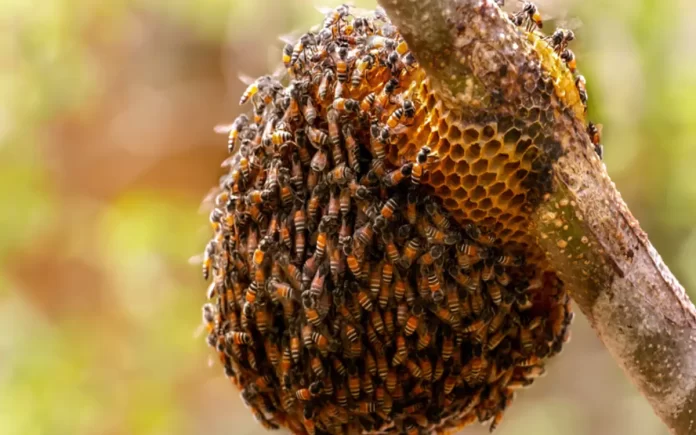Alabama: Auburn University researchers have unveiled the remarkable ability of honey bee colonies to adapt and maintain their nest construction despite severe disturbances.
Contrary to previous beliefs, disrupting the three-dimensional nest structure during nest building did not impede colony performance. This discovery sheds new light on the adaptive nature of honey bee colonies and their nest structure’s role in colony function.
The study focused on honey bee colonies’ intricate three-dimensional nest building behavior. Researchers used non-destructive, photo-based sampling methods with moveable wooden bee-frames to observe nest development over time without harming the colonies. They discovered that honey bees swiftly construct a well-connected spheroid nest with parallel combs expanding in all directions from the nest origin.
To assess the importance of this structure for colony development, researchers disrupted the nest structure of another group of colonies weekly by rearranging moveable bee-frames. Surprisingly, this disruption did not significantly impact colony performance in terms of worker population, comb area, hive weight, or nest temperature compared to colonies with intact nest structures.
Further analysis revealed that honey bees prioritize structural connectedness when expanding their nests, actively repairing connections following disruptions. This highlights their ability to adapt comb shape to available space, crucial in the wild where cavities vary.
The study also suggests that a well-connected nest enhances thermoregulation efficiency, larvae development, and winter survival, besides facilitating information-sharing among colony members and optimizing travel distances within the nest.
“We were all surprised that the shuffled colonies performed as well as they did,” said Auburn’s Peter R. Marting, the study’s first author. “The bees’ resilience led us to develop predictive comb growth models.”
Understanding these adaptive strategies in social insects can offer insights into collective intelligence and resilience in complex systems.
The study, titled “Manipulating Nest Architecture Reveals Three-Dimensional Building Strategies and Colony Resilience in Honeybees,” is published in the journal Proceedings of the Royal Society B: Biological Sciences.
“Honey bees are an extremely well-studied system, but many basic developmental questions remain unanswered,” said Michael L. Smith, senior author of the study. “Sometimes you just have to do the experiment and see what the bees will do.”



